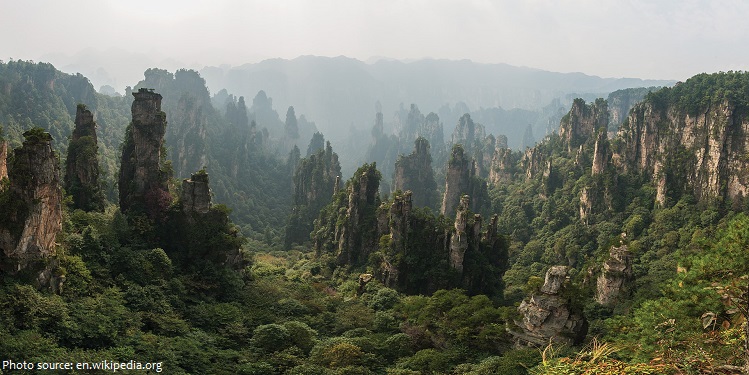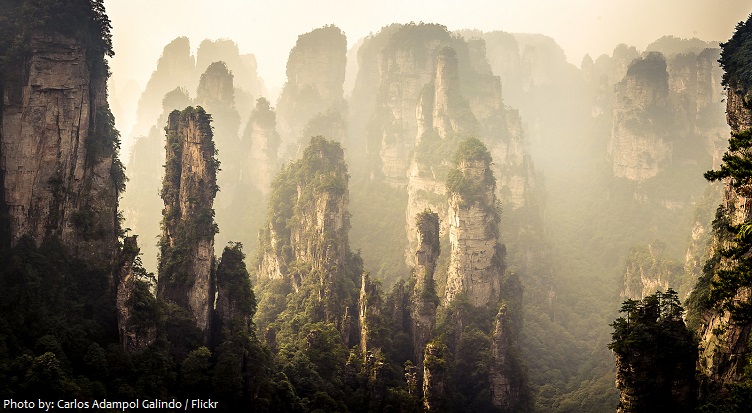Zhangjiajie is located in central China, northwest Hunan Province, over 1000 kilometers (620 miles) from both Shanghai and Beijing.
It is famous for its precarious peaks, limpid streams, dense forests, and large karst caves.
Rising from the subtropical and temperate forests Zhangjiajie has a concentration of quartzite sandstone formations found nowhere else in the world.
Some 243 peaks and more than 3000 quartzite sandstone pillars and spires dominate the scenery in this area called Wulingyuan.
The scenic area consists of four national parks, which are the Zhangjiajie National Forest Park, Suoxi Valley Nature Reserve, Tianzi Mountain Nature Reserve and the recently added Yangjiajie Scenic Area.
Wulingyuan was inscribed as a UNESCO World Heritage Site in 1992. It is also inscribed as an AAAAA scenic area by the China National Tourism Administration.
Wulingyuan Scenic Area covers an area of 397.5 square kilometers (153.5 square miles).
Overall there are over 560 attraction sights to view.
Wulingyuan is situated in the Zhangjiajie City. The city itself was previously named Dayong, and has a recorded history dating back to 221 BC. The new name of Zhangjiajie City was adopted in 1994, after the National Forest Park in the Wulingyuan Scenic Area in order to give it more prominence and after this site had been designated a UNESCO World Heritage Site in 1992.
Although resembling karst terrain, this area is not underlain by limestones and is not the product of chemical dissolution, which is characteristic of limestone karst. They are the result of many years of physical, rather than chemical, erosion. Much of the weathering which forms these pillars are the result of expanding ice in the winter and the plants which grow on them.
Wulingyuan features 40 caves, many with large calcite deposits, and two natural bridges, Xianrenqiao (Bridge of the Immortals) and Tianqiashengkong (Bridge Across the Sky).
The weather is moist year round, and as a result, the foliage is very dense. The weathered material is carried away primarily by streams.
This area was thrust into the limelight after the popular Hollywood movie Avatar was shown. The Hallelujah Mountains in Avatar were inspired by Heavenly Pillar in Zhangjiajie National Forest Park.
One of the park’s quartz-sandstone pillars, the 1,080-meter (3,540 ft) Southern Sky Column, had been officially renamed “Avatar Hallelujah Mountain” in honor of the eponymous film in January 2010.
The towering Bailong Elevator, literally ‘hundred dragons sky lift’, was opened to the public in 2002. At 326 meters (1,070 ft), it is the world’s tallest outdoor lift. It can transport visitors to the top from its foot in less than two minutes. The structure is composed of three separate glass elevators, each of which can carry up to 50 people at a time.
In August 2016, Zhangjiajie Grand Canyon opened the Zhangjiajie Grand Canyon Glass Bridge, the longest (430) and highest (300 m) pedestrian glass bridge in the world.


